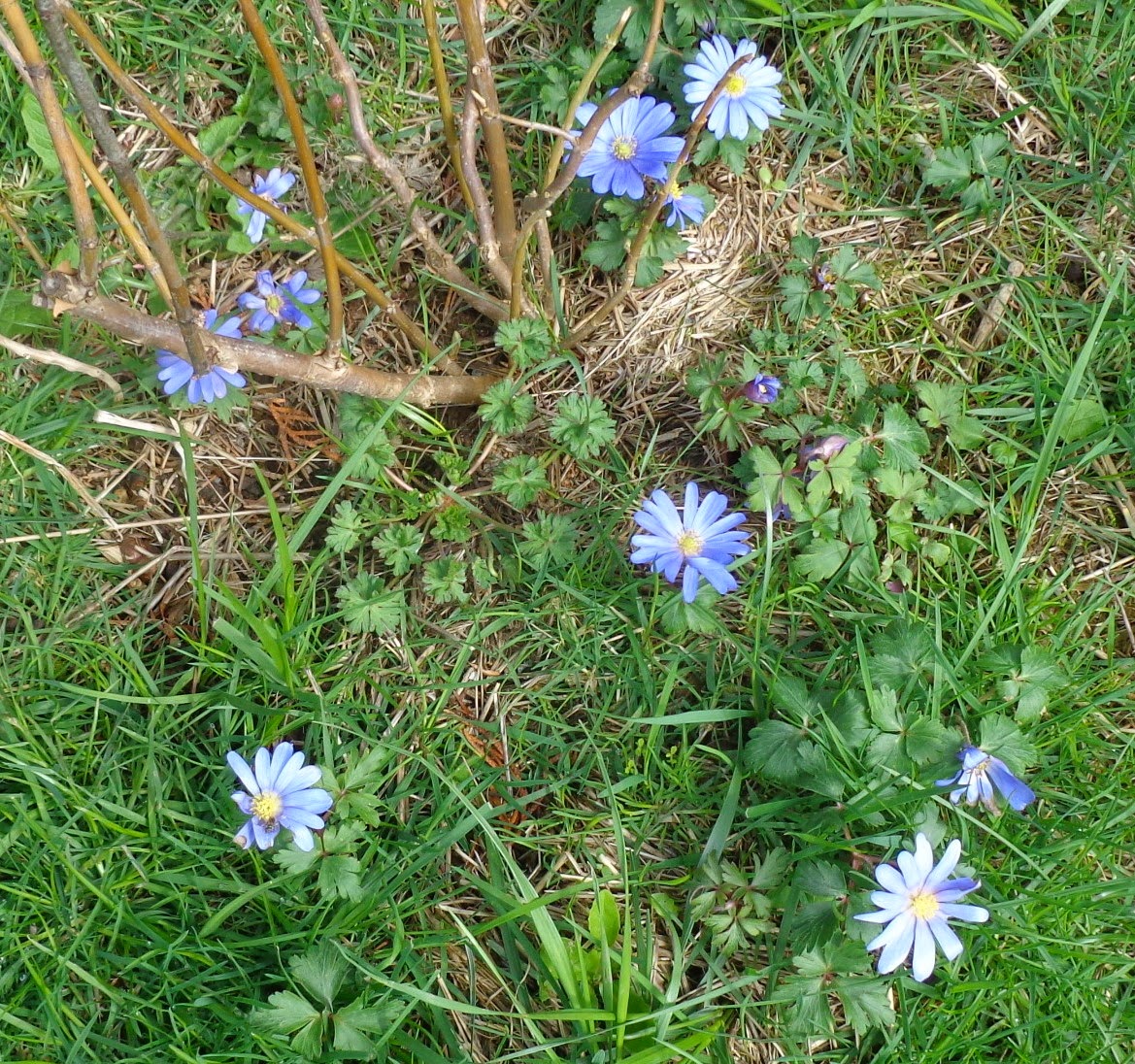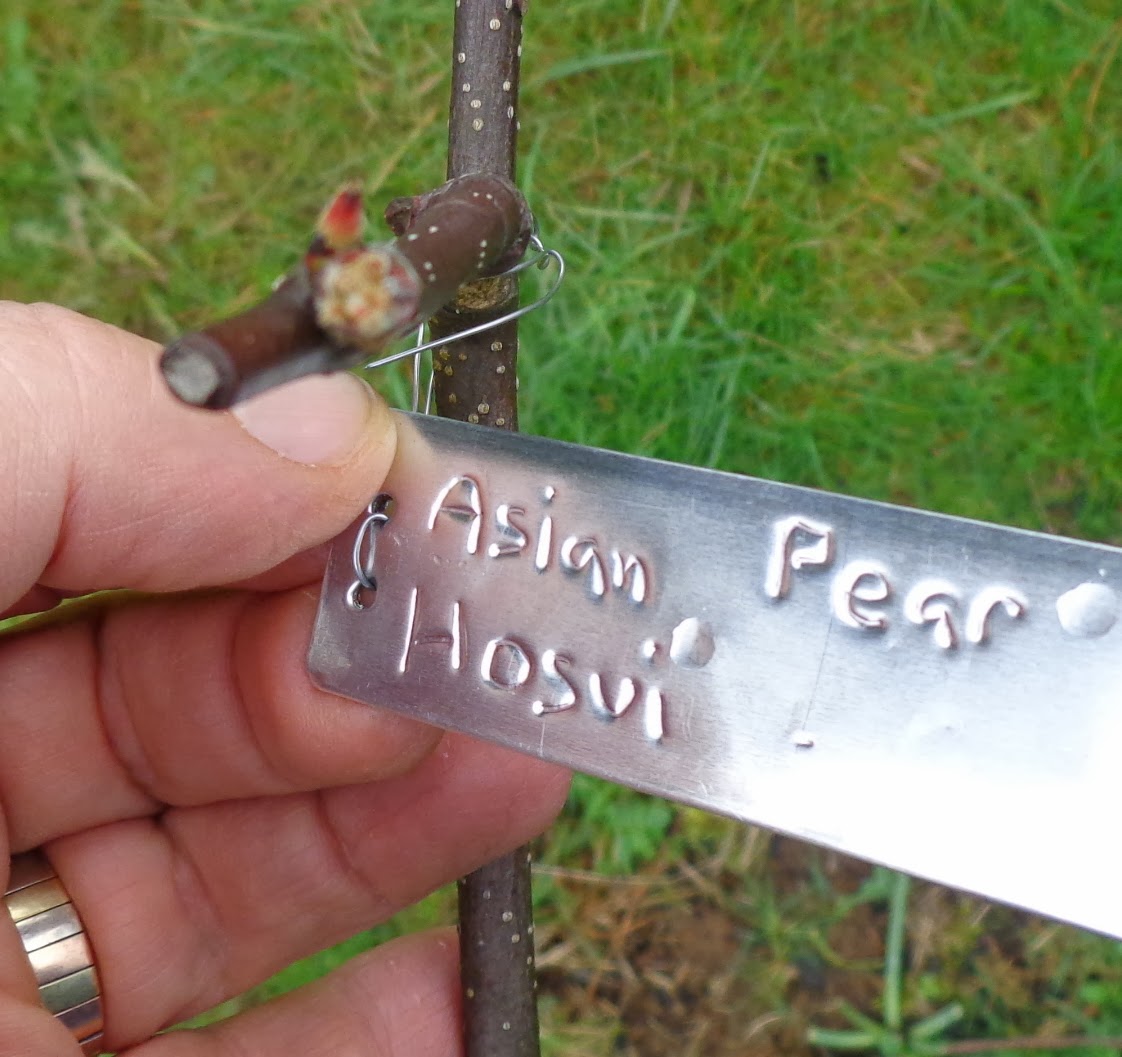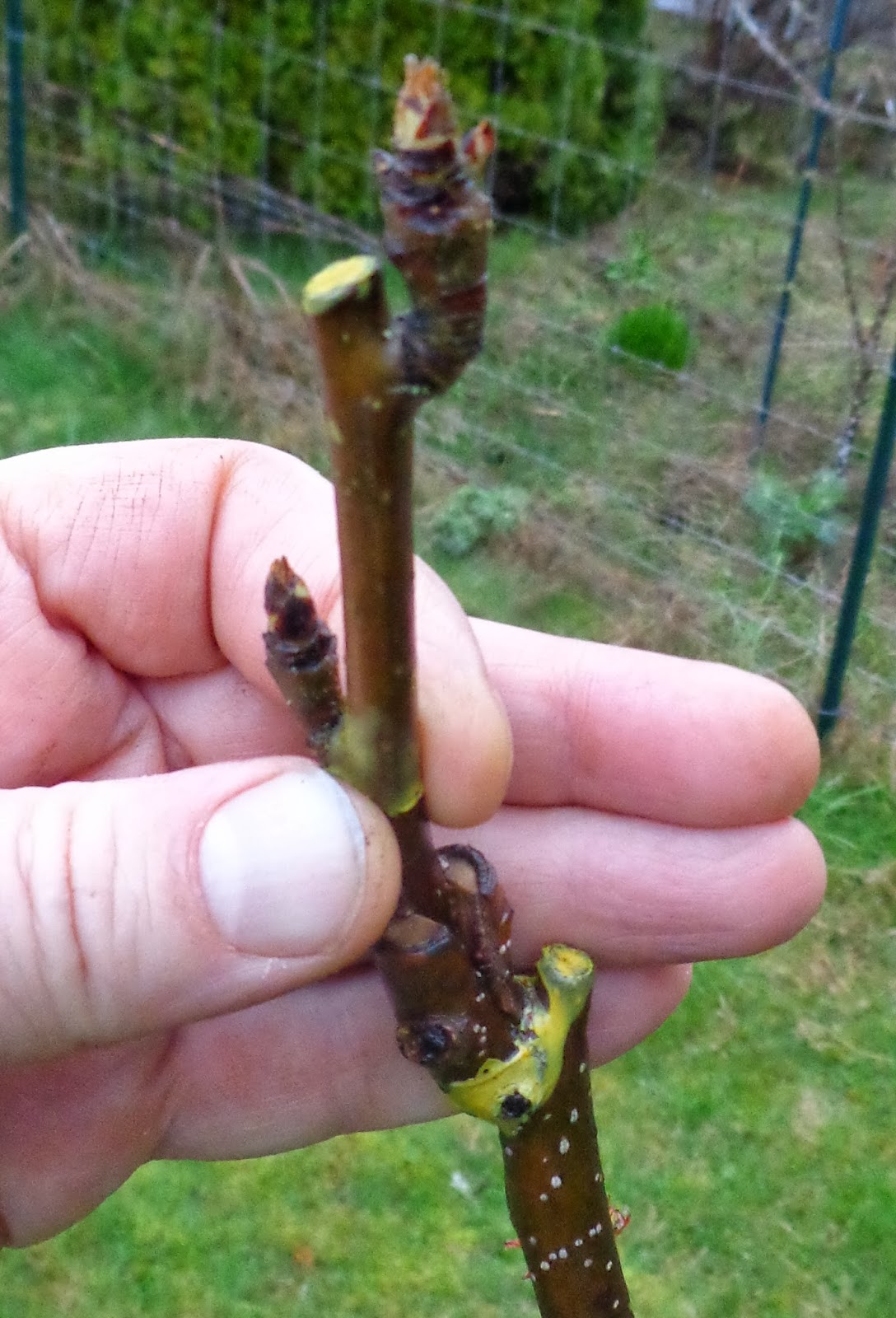 |
| Parts for Home Made Plant Light Fixture |
| 6X24 round pipe | 3.98 |
| 1/4 inch diameter, 12 inch long threaded bar price for 2 | 2.02 |
| 23 watt CFL price for 2 | 8.28 |
| wing nut 1/4" price for 4 | 1.21 |
| hex nut 1/4" price for 5 | 0.97 |
| bedroom light fixture | 7.98 |
| extension cord 8' | 6.97 |
| Sum | 31.41 |
I forgot washers. I bought those and 2 eye bolts for hanging the fixture. That's about $2 more. I could have used a cord I had lying around. That would reduce the cost by $7. If I shopped around I might have found a cheaper light fixture too.
 |
| Holes drilled in pipe, inside nuts and washers screwed onto threaded rods |
So far very easy. Looking at the original, maybe I should have found longer rods. These should be OK.
Drilling the holes for the threaded rods and assembling them took about 10 minutes.
The I pondered for a week how to assemble the unit with the bedroom light kit. The reflector is curved. The light kit rests on a flat surface. I finally decided to assemble it as-is. The center of the reflector flattened to accommodate the bedroom light kit, which is fine.
I added eye hooks at the end to hang the unit from my plant stand.
THe CFL lights are100-watt equivalent, 23-watt CFL bulbs. Estimated energy cost per year is $2.77. Lumens 1,600 per bulb. These are bright-white. I don't know if it matters, bright-white vs. daylight. Anything I use seems to work OK.
One issue I got wrong. I've been trying to figure out what type of bulb, daylight, bright white, soft white. I bought bright white. Searching around artificial light growing sites, I should have bought daylight. 2700k - bright white - is good for flowering - probably why my peppers are flowering. 6,500k - daylight - are better for growing. From the linked site " for example with tomatoes you would want to use a 6500k bulb until your ready to start the flowering stage of your tomato plants".
I may add aluminum foil to the ends to reflect light back into the unit.
 |
| Assembled CFL Grow Light |
 |
| Assembled CFL Grow Light |
 |
| CFL Grow Light |
























